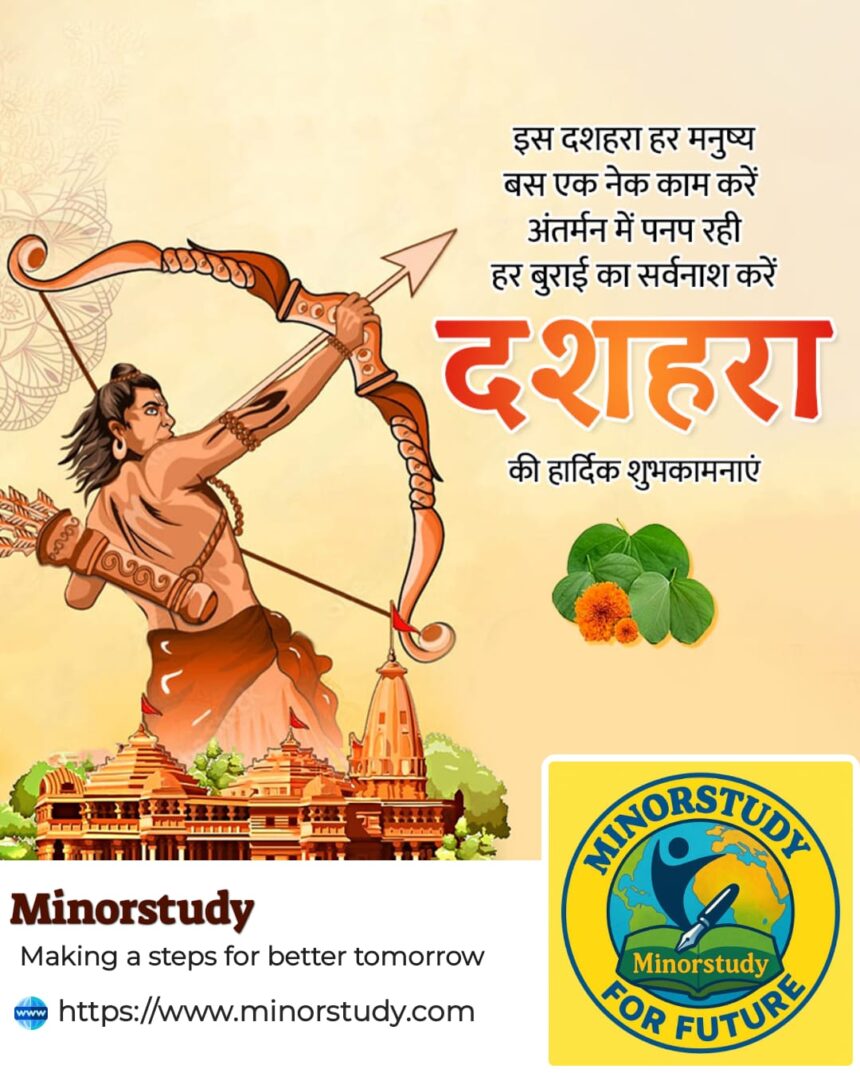Dussehra That Will Uplift Your Spirit
Dussehra, also known as Vijayadashami, is one of India’s most vibrant and widely celebrated festivals. It signifies the triumph of good over evil, commemorating Lord Rama’s victory over the demon king Ravana and Goddess Durga’s victory over the buffalo demon Mahishasura. Dussehra is a festival that transcends religious devotion, blending mythology, cultural performances, social bonding, and community celebration. In this article, we explore Dussehra’s history, fascinating facts, timeline, significance, observance, and its impact on our daily lives and society.
History of Dussehra
Dussehra has its roots in ancient Hindu mythology. The festival is primarily associated with two major stories:
Lord Rama and Ravana: According to the Ramayana, Ravana, the ten-headed demon king of Lanka, abducted Sita, the wife of Lord Rama. With the help of Hanuman, Sugriva, and his army of monkeys, Rama fought a fierce battle in Lanka and defeated Ravana. This victory symbolizes the triumph of good (dharma) over evil (adharma).
Goddess Durga and Mahishasura: Another significant narrative is linked to Goddess Durga, who fought the buffalo demon Mahishasura for nine days and nights. She emerged victorious on the tenth day, which is celebrated as Vijayadashami. This story highlights courage, righteousness, and divine justice.
Historically, Dussehra has been celebrated since ancient times, with references found in early texts such as the Ramayana, Mahabharata, and Devi Mahatmya. Over the centuries, it evolved into a grand festival marked by processions, theatrical reenactments (Ramlila), effigy burning, and public festivities across India.
Timeline of Dussehra
Dussehra is observed in the month of Ashwin (September–October), following the lunar calendar. The festival spans ten days, known as Navratri, culminating on Vijayadashami.
Day 1 to 9 – Navratri:
Each day is dedicated to worshipping a form of Goddess Durga.
Devotees fast, perform prayers, and participate in cultural events.
Special rituals and offerings are made to seek blessings for prosperity, health, and courage.
Day 10 – Vijayadashami/Dussehra:
Celebrates the victory of Lord Rama over Ravana and Goddess Durga over Mahishasura.
Effigies of Ravana, Kumbhakarna, and Meghnath are burnt in public gatherings.
Processions, folk dances, and fairs mark the day in many regions.
Fascinating Facts About Dussehra
Largest Theatrical Performance – Ramlila:
In cities like Varanasi, Ramnagar, and Delhi, Ramlila (dramatic reenactment of Ramayana) is performed over several days, attracting thousands of spectators.
Effigy Burning Symbolism:
Burning Ravana’s effigy signifies the destruction of negative tendencies such as ego, anger, and greed.
Regional Variations:
In West Bengal, the festival coincides with Durga Puja.
In Karnataka, Mysuru Dussehra is world-famous for grand processions and royal celebrations.
Cultural Integration:
Dussehra integrates art, music, dance, and theatre, promoting cultural heritage.
Economic Impact:
The festival boosts local businesses, crafts, textile industries, and tourism.
Global Celebrations:
Indian communities worldwide celebrate Dussehra, especially in the USA, UK, Canada, and UAE, keeping traditions alive.
Community Bonding:
Public gatherings, fairs, and collaborative rituals strengthen social cohesion.
Spiritual Empowerment:
Devotees seek inner strength, moral courage, and guidance to overcome personal challenges.
Environmental Awareness:
Eco-friendly effigies and sustainable celebrations are now encouraged to minimize environmental impact.
Significance of Dussehra
Dussehra holds profound spiritual, moral, and social significance:
Spiritual Significance: Worship of Lord Rama and Goddess Durga inspires righteousness, devotion, and courage.
Moral Lesson: Emphasizes the victory of truth, justice, and good over evil and the importance of ethical living.
Cultural Importance: Preserves Indian classical arts, dance, music, and storytelling traditions.
Social Impact: Encourages charity, communal harmony, and the celebration of diversity.
Psychological Benefits: Boosts happiness, motivation, and social belonging through collective celebration.
Observance and Rituals
Dussehra is marked by various rituals and activities that engage families and communities:
Ramlila Performances: The enactment of Ramayana scenes teaches moral values and engages the community.
Effigy Burning: Public burning of Ravana’s effigies symbolizes eradication of evil traits.
Navratri Fasting and Worship: Devotees observe fasts, chant mantras, and perform pujas for spiritual growth.
Processions and Fairs: Streets are adorned with decorations, lights, and cultural events.
Family Gatherings and Feasts: Special meals and sweets are shared among family and friends.
FAQs About Dussehra
Q1. Why is Dussehra celebrated?
Dussehra celebrates the victory of good over evil, commemorating Lord Rama’s defeat of Ravana and Goddess Durga’s victory over Mahishasura.
Q2. When is Dussehra celebrated?
It is celebrated on the tenth day of the Hindu month of Ashwin, usually in September or October.
Q3. Are Navratri and Dussehra the same?
Navratri refers to the nine nights of worship dedicated to Goddess Durga, while Dussehra (Vijayadashami) is the tenth day celebrating the victory of good over evil.
Q4. What is the significance of burning Ravana’s effigy?
It symbolizes the destruction of ego, arrogance, and negative qualities in human life.
Q5. Can non-Hindus participate in Dussehra celebrations?
Yes, the festival is inclusive, with many people participating in cultural events, fairs, and theatrical performances.
Impact on Daily Life
Dussehra influences daily life in multiple ways:
Family Bonding: Relatives come together, strengthening relationships.
Culinary Traditions: Special sweets, dishes, and festive meals become a part of daily routine during the festival.
Community Engagement: People participate in organizing fairs, decorating venues, and performing rituals.
Shopping and Retail Activity: Increased buying of clothes, gifts, and decorations boosts local economies.
Mental Well-being: Celebration and communal joy reduce stress and foster happiness.
Importance in Society
Dussehra plays a vital role in society:
Cultural Preservation: Keeps traditional arts, music, drama, and literature alive.
Social Harmony: Encourages unity among people of diverse backgrounds.
Economic Boost: Supports small businesses, artisans, and local economies.
Moral Guidance: Reinforces ethical living, courage, and the importance of righteousness.
Inspiration for Youth: Stories of valor and virtue motivate younger generations.
Wishing During Dussehra
Sharing greetings during Dussehra spreads positivity and goodwill:
“May this Dussehra bring victory over all challenges in your life and fill your days with happiness.”
“Wishing you a joyful and blessed Dussehra, filled with love, peace, and prosperity.”
“May Lord Rama and Goddess Durga bless you with courage, strength, and success.”
Conclusion
Dussehra is a festival that celebrates more than just mythology. It is a celebration of courage, moral victory, cultural heritage, and social unity. Through rituals, performances, and communal activities, Dussehra imparts timeless lessons about righteousness, courage, and the ultimate triumph of good over evil. It influences daily life, strengthens social bonds, and preserves India’s rich cultural traditions.
Participating in Dussehra, whether through devotion, art, or celebration, reminds us of the power of goodness, the importance of ethical living, and the joy of community. It is a festival that inspires, uplifts, and connects people, leaving a lasting impact on individuals and society alike.









**mind vault**
mind vault is a premium cognitive support formula created for adults 45+. It’s thoughtfully designed to help maintain clear thinking
I believe this site contains some real good information for everyone :D. “When you get a thing the way you want it, leave it alone.” by Sir Winston Leonard Spenser Churchill.
Hello there! Do you know if they make any plugins to safeguard against hackers? I’m kinda paranoid about losing everything I’ve worked hard on. Any recommendations?
I’m writing to make you know what a impressive experience my cousin’s child had visiting your blog. She discovered some things, which included how it is like to have an awesome coaching mindset to have certain people very easily gain knowledge of specified tricky subject matter. You really surpassed visitors’ expected results. Thank you for displaying such effective, healthy, explanatory and in addition unique thoughts on your topic to Gloria.